So, welcome to this new series of reviews that I hope I will finish! I already announced it a while ago, and since I was in a mood of writing a review but had a few ideas, I did a poll on the Discord server. This one won. But I decided to post it today because it’s the 10th anniversary of the release of the first Nekokenban.
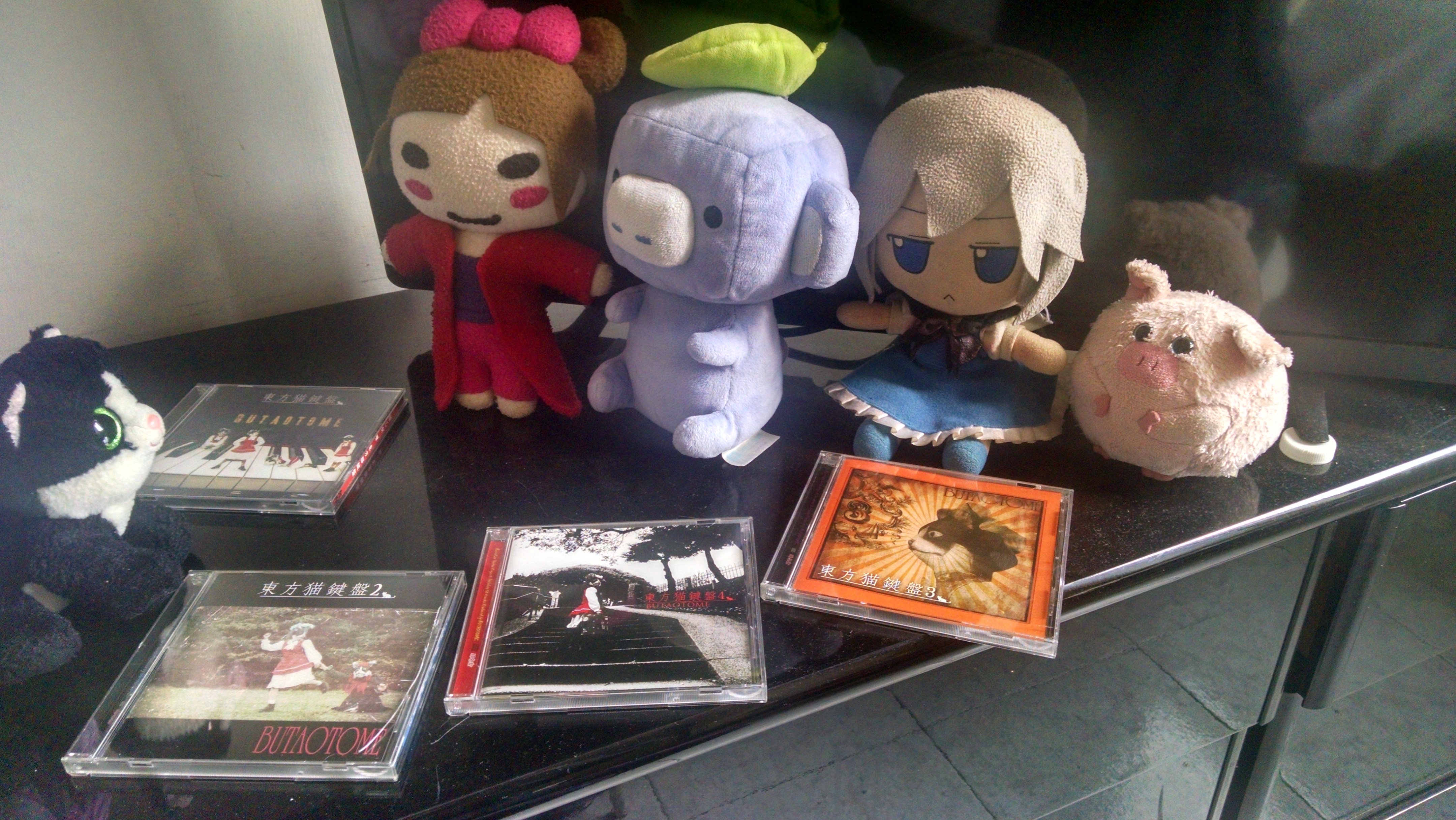
This series will be a tribute to Paprika, who left BUTAOTOME this year but she is still a member of our hearts. We will go through her 10 years of activity, with a big focus on the Nekokenban series since it was her main project.
So to start, here are some fun facts about Paprika as a solo pianist. She has been playing piano since she was little, her parents were big jazz lovers [Avex interview]. She quoted Thelonious Monk as an influence [Fanbook profile]. And she never had any Touhou/doujin experience before BUTAOTOME [Fanbook symposium]. In the Ane manga, we also discover stuff about her past as a ganguro living in France and doing breakdance competitions. But I’m not sure if this can be relevant for her musical style (maybe for the I LOVEs…?).
Instrumental arrangements have been always a part of BUTAOTOME since their conception. One of their first uploads was, in fact, a piano instrumental arrangement of Satori Maiden ~ 3rd eye [Nicovideo]. This arrangement found its way to the very first BUTAOTOME album, Touhou Kaiten Mokuba, along with a Voyage 1969 one. It seems it has always been in BUTAOTOME’s mind to have albums that have only tracks of one specific type, and those two instrumentals were mostly on the side, as intro and outro tracks for the CD.
Comiket 78 was the Pig’s very first Comiket where they were able to release something. So, other than their 3rd Touhou vocal album, we got their very first Touhou instrumental album: Touhou Nekokenban.
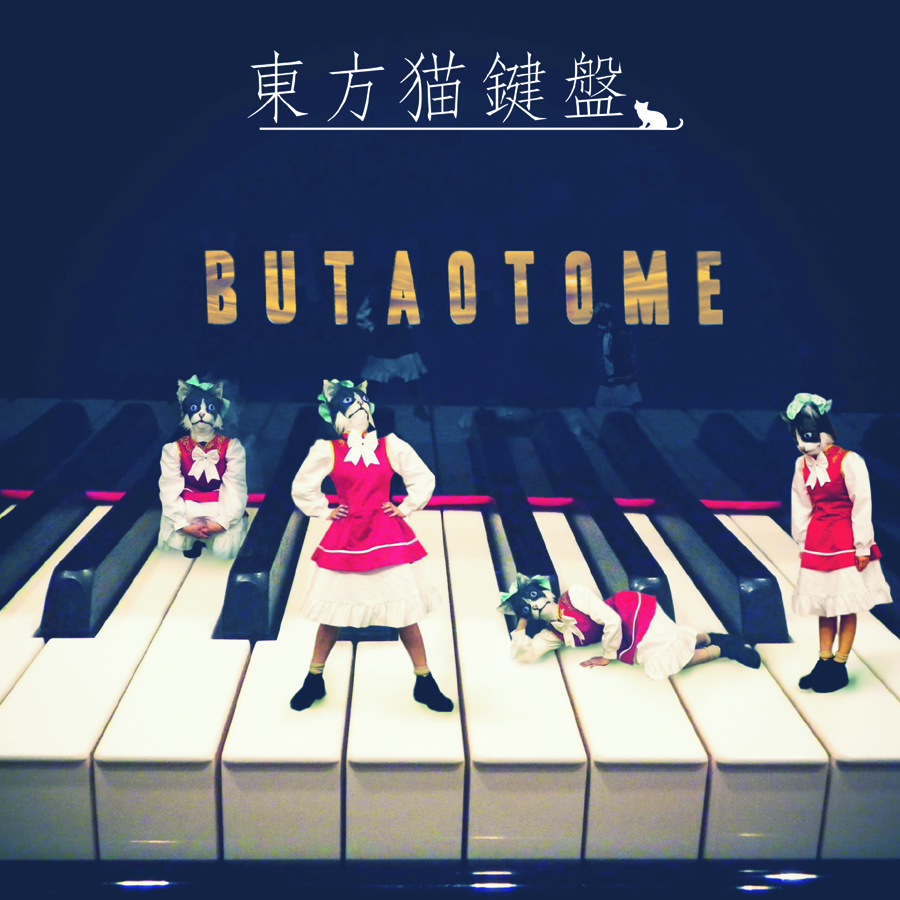
This album is a mix of piano instrumental arrangements of BUTAOTOME’s vocal songs and Paprika’s own Touhou piano arrangements. The result is a collection of moods. Joy, melancholy, sadness. The rearrangements of vocal songs keep the core melody and structure of their originals but also manage to have their unique flavor. Paprika’s own arrangements have their own take and spice that makes them stand out among the sea of “Touhou Piano” stuff. Take for example Ryuusei: starts off as a typical Diao ye zong arrangement, but then in the second part it becomes completely different. It makes me imagine Chen watching a night sky full of shooting stars—the title is fitting! Midnight starts calm, but then it gets a Paprilicious swingy shift. Every track is great, making this album a promising first entry.
An interesting thing is that all the members are involved in some way. Obviously Paprika and Ane do most of the work, but Comp is in charge of mastering (as well mixing for the first albums), while Ranko was in charge of naming the tracks. Not sure if she still kept her task for the later entries, because I can’t imagine her naming a track “LOL”. That’s what I would expect from a bunny who actually wrote “git gud” in a tweet. Buuut anyway.
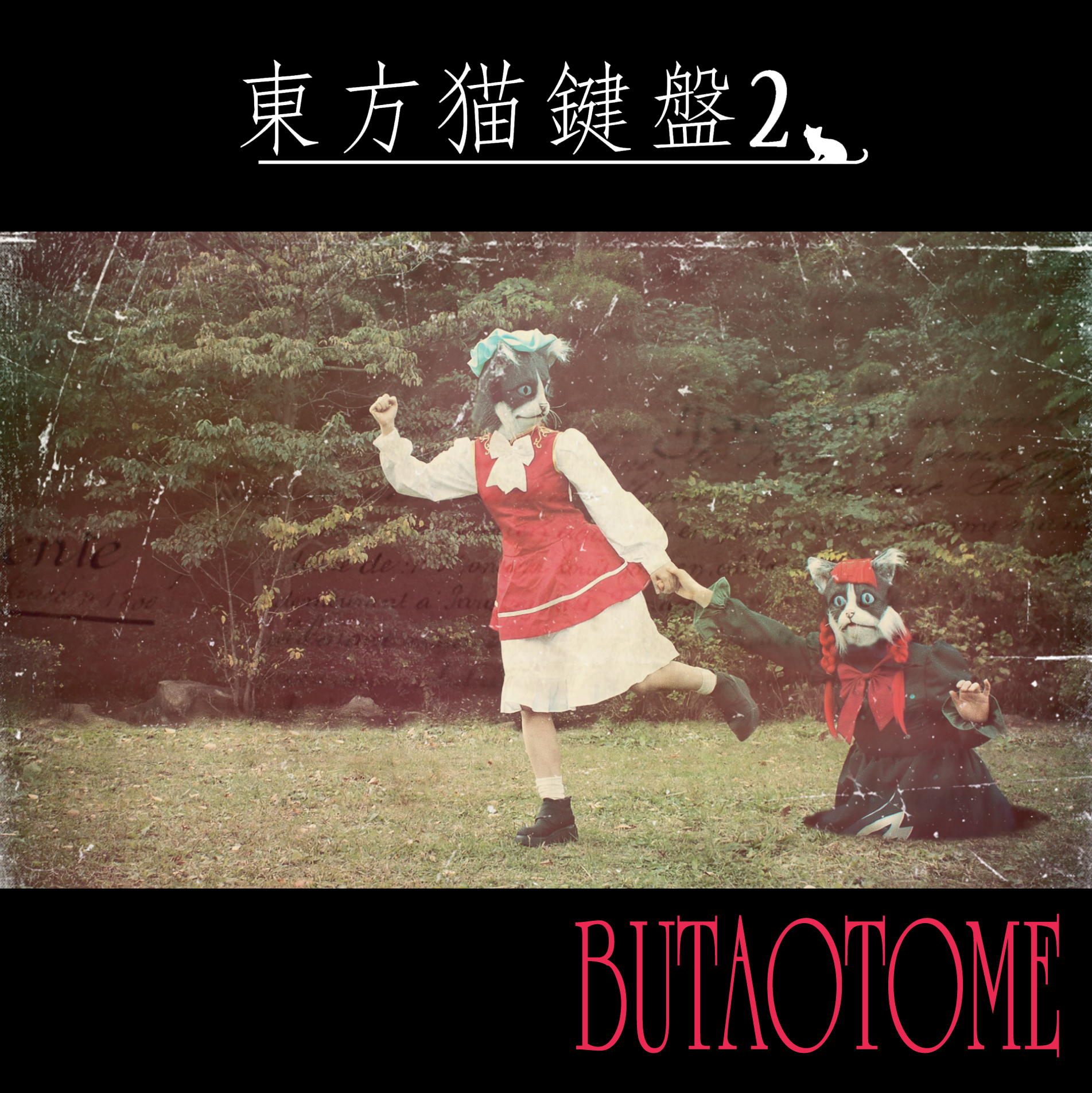
And after the first album, the series continued, and 2010 ended with Touhou Nekokenban 2, another collection of piano solo arrangements, an extension of the first album. There are also two cats on the cover as PapriOrin joins PapriChen, and there are a lot of pics of them playing together in the album. Not gonna lie, they are a bit creepy… The old masks will be always in our hearts. Anyway, Orin only appeared in this album, and there is not even an arrangement of any of her themes! Buuut get used to it. PapriChen is one of the staple elements of the series, but not a lot of the albums include arrangements of Diao ye zong/Fantastic Tales of Toono. Either way.
A couple of months ago, Ane said that this album is the most sleep-inducing one. “Sleep-inducing” seems to be a very common comment to describe Paprika’s music, whether positive or negative. We’ll see the culmination of this in a later part of this series. Anyway, this album is a but duller than the previous one, but it has its upbeat moments, like most of the rearrangements of vocal songs, or my favorite track Yume no Soto. Also, I love Kakoinaki here, it’s beautiful.
And now, 2011. Thanks to collage, we get a piano sheet of Haruka Tooi Sora no Koe, the only instance of an official music sheet for a BUTAOTOME song. Sheet music for Touhou arrangements are a very rare thing, and most of the stuff you may find on the internet is fanmade.
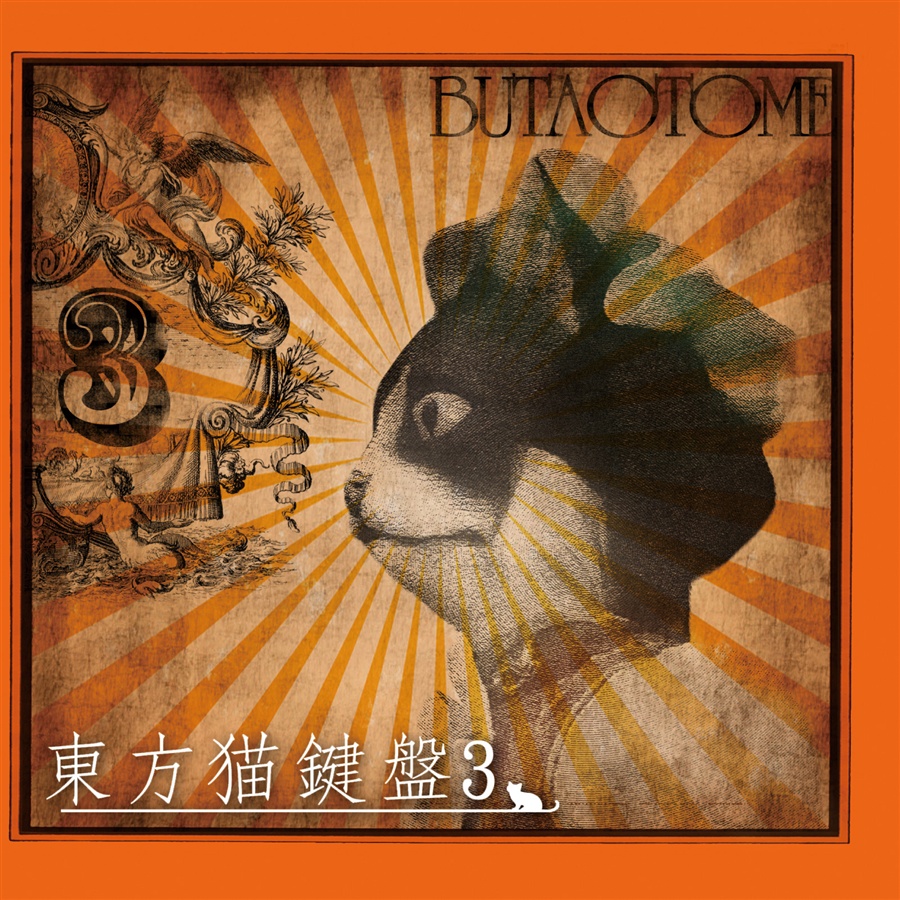
Anyway, after two albums, Paprika decided that piano wasn’t enough. Starting from Touhou Nekokenban 3, she starts to add programming elements in some tracks. They just add flavor and rhythm. This album focuses much more on the sound rather than the concept/design, mostly to showcase the first step in Paprika’s evolution. But a good chunk of the tracks is still with the series’ key instrument, like Kanjou no Sukima and the rearrange of Yurara Kamishibai. But my personal favorite track is Te wo tatakau, a Riverside View arrangement dominated by the other instruments and that just feels so happy and upbeat. I think there was a cute fanmade PV for this song? Anyway, the orange (Chen’s name color) dominates this album’s design, so I can’t help but associate every track to warm colors, different shades of orange and brown-ish/beige tones.
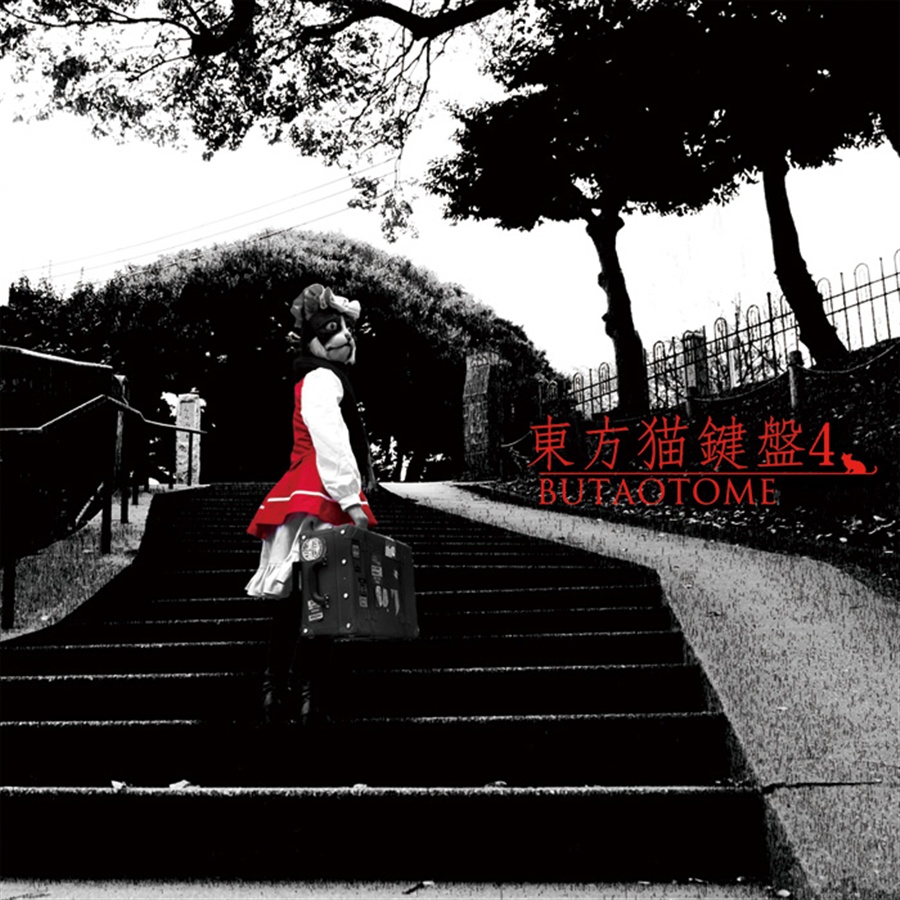
Nekokenban 4 expands on the same direction from the previous album. Personally, I much prefer the second half of the series (from 11 to 20), also because I’ve listened to those albums much more often, but this is my favorite album from the first half. It helps that it’s the closest thing we have to a “Hifuu Nekokenban”, along with a later entry.
This album is full of cool songs. Starting with Akenai Yoru, Samenai Yume, which is basically divided into two parts, continuing with the somber Madoromi ni Ochiru, then a whole piano section including Tsuki wo Hamu and Stardust Serenade, with Shall we dance and its contrast between the upbeat instruments and the mellow piano… and a lot of great songs in between. Speaking of the rearranged track, Any’a Kouro has a much more upbeat feel than the original song but without becoming happy cheerful, while Yumekikou becomes a melancholic piano solo.
I love the cover art. I’m a big fan of monochrome stuff, and the red adds an extra touch. It sets up the mood for a solitary journey: PapriChen running away from home… and then you open the booklet and you see those random American comic-inspired images. I love this group.
This is the end of the first part of the retrospective! The second part will cover the years 2012–2013, so it will talk about Nekokenbans 5–8! Also, tonight (August 14, 21:30 CEST) I’ll be doing a voice chat in TC’s Discord server, where we will listen to the first Nekokenbans and talk about them. Maybe also Long Skirt Panorama Girl, since today is its 10th anniversary.